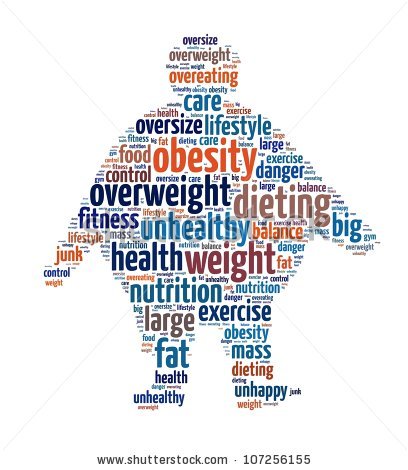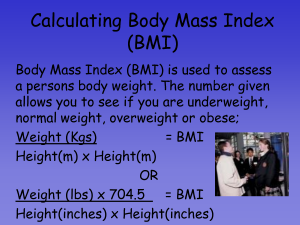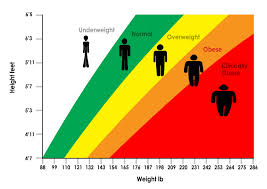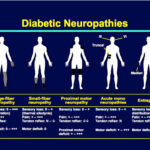There are people who look good when thin, there are others who look good when fat. Generally when type 2 patients are uncontrolled in their sugar control, there is weight loss due to the excess catabolism by glucose.
Increased obesity was observed in all ages, genders, races and educational levels with an increased magnitude among those in their 20`s with some form of college education. One fourth of the children and adolescents between the ages 6 and 17 are overweight!
Effects of being obese
Negative attitudes towards obesity are very common, lead to depression and these people experience discrimination from society. They usually find excuses shying away from exercise such as blaming the sweating, the itching, and the discomfort by rubbing of thighs, increased pad of fat in the armpits, having rashes between skin folds on the neck, armpits, below the breasts, in the groin and between the thighs. Getting dresses is a problem though there are some shops that cater only to the oversized.
The risk is deadly!
Control of weight is important to prevent or manage blood pressure, diabetes, joint related problems, cancer of the endometrium and ovaries among women and cancer of the colon, snoring and disturbed sleep patterns( called Obstructive sleep apnoea), gall stones, impotence and even depression.
The impact of obesity
Disease Relative risk in men Relative risk in women
Type 2 diabetes 12.7 5.2
Hypertension 4.2 2.6
Heart attack 3.2 1.5
Colon cancer 2.7 3
Angina 1.8 1.8
Gall bladder disease 1.8 1.8
Ovarian cancer — 1.7
Joint problems 1.4 1.9
Stroke 1.3 1.3
Normally people tend to gain weight with age due to change in their physical activity or small changes in diet. Weight gain can also be seen during pregnancy, menopause, adolescence, just after marriage or among those who stop smoking.
What causes obesity?
All are aware of the sedentary lifestyle– spending more time on the couch or bed. Too much of a dependence on automated chores such as having remote controlled devices for almost every chore at home- such as for opening and closing the gates, the doors, for raising and closing the blinds, for turning on and off the lights , turning on and off the cooking range, even controlling the television, having washing machines and what not!
It is a well known fact that when there is a mismatch between the intake of food and the expenditure of calories, obesity sets in.
Many still to this day blame their genes and poor forefathers for their obesity!
There are some other causes for obesity :
• Cessation of smoking can cause an increased appetite and reduced metabolic rate which can cause a modest raise of weight. (NO! This does not mean smoking is good for weight control!)
• There are medicines such as anti diabetic medicines, anti depressants, steroids in large doses for a long duration and some medicines for treatment of fits which can cause weight gain.
Types of fat
There are two types of fat on a person. They are subcutaneous fat and visceral fat. The former is seen just under the skin and latter seen internally around the organs.
Subcutaneous fat acts like a cushion to protect the body. It acts a storehouse of energy. Excess subcutaneous fat will give the flabby arms and thighs and is easily burned off with exercise than with diet alone.
Visceral fat increases the waist line tightening the internal organs. Thin people also have visceral fat which makes them as prone for diabetes and cardiovascular diseases as much as for obese people. Excess visceral fat is linked to increased triglycerides ( bad cholesterol), reduced High density lipoprotein ( good cholesterol), elevated blood pressure and elevated blood glucose.
Belly fat goes by many names such as beer belly, pot belly, abdominal fat, organ fat or intra-abdominal fat. Visceral fat is located inside the peritoneal cavity packed in between the internal organs as opposed to subcutaneous fat ( found underneath the skin) and intra muscular fat ( found interspersed in skeletal muscle) An excess of visceral fat is known as central obesity and the abdomen protrudes excessively.
Role of fat: Fat serves as a site for storage of energy, fat effects release of fatty acids in response to signals and functions as an endocrine organ
Apple sized, Pear sized, and Lemon on match stick are different ways to describe those overweight or obese.
There are variations of the size of a person with changes in gender and ageing.
In males, there is a greater lean mass, bone mineral mass, muscle mass in arm, reduced fat mass, less limb mass, greater central fat and larger stronger bones ( there are exceptions though)
Among women, after pregnancy there is increased visceral and central adiposity. Subcutaneous fat is more among women
How to measure level of obesity?
There are different methods to measure accurately the quantity of body fat- underwater densitometry, dual energy X ray absorptiometry, total body water estimate and bioelectric impedence.
Body Mass Index (BMI)
BMI is a common term used by the health care team to describe if you are in range for normal weight to height . This is calculated by dividing the weight in kilograms by the square of the height in meters.
BMI does not reflect the regional fat distribution and is not be suitable among the elderly due to reduced lean body mass.
Although Asians have lower BMI than westerners, they have a higher % of body fat. Only 1/5 of the total body fat is located centrally of this ¾ is subcutaneous. Visceral fat usually increases in both sexes.
A person of BMI 25 has a 5 fold risk of developing type 2 diabetes than a person of BMI 22. If the BMI is increased to 30, the risk is increased to 28 times and the risk is increased to 93 times if the BMI is raised to 35 and more.
The common misconception that only visibly over weight and obese people have belly fat needs to be debunked. Waist to hip ratio is a better marker than the weighing scale in knowing how much belly fat one has.
If the waist Hip ratio is <0.8 (males) < 0.75(females) the risk is low
If the waist to hip ratio is 0.96-1.0 (males) or 0.81-0.85 (females) the risk is moderate
If the waist to hip ratio is >1.0 (males) and >0.85 (females) the risk is high
While assessing the treatment options, the healthcare professional has to take into account the expectations, the level of motivation, the activity history, screen for psychiatric disorders and eating disorders. There are so many diets available in the market each one claiming to be better than the other. The same applies to the various health programs each claiming to give better weight reduction than the other competitors. Losing weight can be frustrating to both the clinician and the patient.
How to reduce weight?
Even a 5-10% weight reduction can help to reduce blood pressure, lipids, insulin resistance, prevent joint problems and improve the quality of life and improve the psyche of the patient.
A simple step of reducing just a spoon of sugar a day can help you reduce 500 cals a day!
Pharmacotherapy: Though there are many medicines to help reduce weight, remember there are side effects with each. There are herbal medicines as well. Some of the so called weight loss powders have had side effects due to some of the chemicals incorporated in them. But, the silver lining is that there is nothing to beat a controlled food intake, eat sensibly and exercise in some form to burn off more than what you ate. There are just no short cuts to reducing weight. You need essential nutrients and you need a good breakfast. Drink plenty of fluids in the form of water and go for natural unprocessed food. Metformin has mild weight losing properties, SGLT2 I class of medicines such as Dapagliflozin, Empagliflozin, Ertugliflozin, GLP1RA group of medicines such as injectable Liraglutide( Saxenda®), Dulaglutide(Trulicity®), Semaglutide(Ozempic®), oral GLP1RA such as Semaglutide(Rybelsus®) and Orfoglipron, Dual GLP-GIP injectable such as Tirzapetide( Mounjaro®) are presently available in the market globally. Recently a triple receptor agonist (GIP-GLP1RA and Glucagon) is on trials.
Amylin mimetics, Neuropeptide Y inhibitors, Gherlin antagoinists, Leptin analogues are in the pipeline as effective anti obesity medicines. Phenteramine, Orlistat, Naltrexone and Topiramate are approved medicines for obesity management.
Doing some stepping or spot jogging exercises while watching television, pilates exercises, Yoga or Tai Chi , doing some aerobics or hula hoops in the confines of your room, can also help to reduce weight. This negates the excuses of not having a good neighborhood for exercising.
Visceral fat deposition can be reduced by losing weight the healthy way, de-stressing by meditation and deep breathing exercises, hydrating well with fluids, taking a healthy diet containing enough of fiber, fruits and vegetables, wheat bran, fish, non roasted nuts, green tea avoiding junk food, fruit punches, alcohol and leading a life which is physically active.
Did you know Ghee and Butter contain essential fatty acids? You may recollect that those in the past generation ( and even today)used to have thick rotis ( made with dough of wheat) with a dash of ghee or butter on them for food in parts of northern India. But, you must also remember that these people used to expend the energy as well. Having such rotis and relaxing on a sofa, in today`s world can be a suicide.
More processed food contains less of vitamin B12.
Bariatric surgery has developed in a big way and has been touted as a surgical modality of treatment for diabetes. It has been detailed in the blog titled,”Bariatric surgery.”
Read more in the post titled, “Weight loss”
















